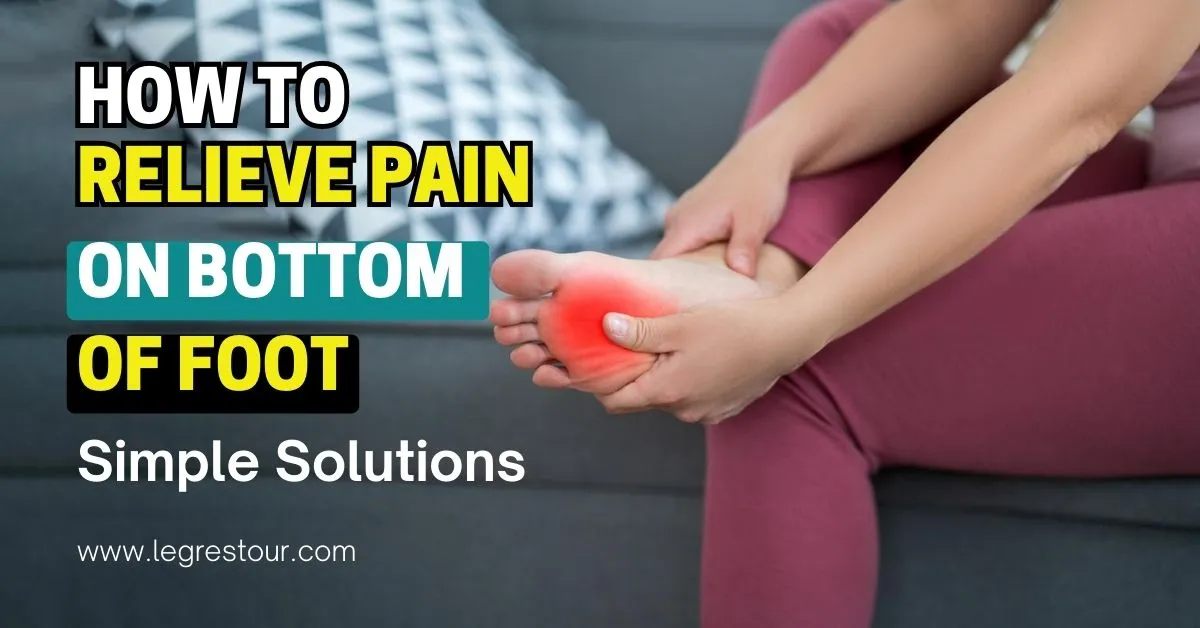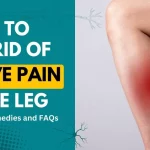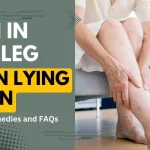Foot pain on the bottom of the foot, also known as plantar fasciitis, is a common condition that causes pain and discomfort. The plantar fascia is a thick band of tissue that runs along the bottom of the foot, connecting the heel bone to the toes. When this tissue becomes inflamed, it can cause sharp, stabbing pain in the sole. The pain is often worse with the first steps in the morning or after long periods of standing or sitting. Fortunately, there are many potential remedies to help relieve this foot discomfort. We will explore how to relieve pain on bottom of foot, its causes and home remedies.
Causes of Pain on the Bottom of the Foot
There are several possible causes for plantar fasciitis:
Overuse
Repeated strain to the plantar fascia from activities like running, jumping, or standing for long periods can cause tiny tears and inflammation.
Obesity
Carrying extra weight puts additional stress on the plantar fascia and can lead to pain.
Foot Structure
High arches or flat feet can put some people at higher risk for plantar fasciitis.
Tight Calf Muscles
Short, tight calf muscles cause increased strain on the plantar fascia.
Age
Pain becomes more common as people get older.
Sudden Weight Gain
Abrupt increase in body weight stresses the fascia.
Improper Footwear
Shoes without arch support or cushioning increase pressure on the bottom of the foot.
High Impact Activities
Certain sports like dancing, aerobics, or running can lead to overuse.
Occupation
Jobs that require long hours of standing and walking are linked to plantar fasciitis.
Pregnancy
Weight gain and inflammation during pregnancy contribute.
If the pain persists for more than a few months, there may be a heel spur causing irritation. Bone spurs are calcium deposits that form along the bone and put added pressure on the fascia.
Remedies to Relieve Foot Pain
There are many natural remedies and treatments that may provide relief:
Rest
Avoid activities that exacerbate pain to allow the inflammation to calm down.
Ice
Applying ice packs to the sore heel for 15 minutes a few times per day can reduce swelling.
Heat
Alternate using heat, like heating pads or warm foot soaks, to increase blood flow and relaxation.
Massage
Gently rolling the arch of the foot over a tennis ball, foam roller, or frozen water bottle can stretch and relax the plantar fascia.
Shoes
Wear supportive shoes with good arch support and cushioning. Avoid going barefoot.
Stretching
Stretch the calf muscles several times per day, especially before getting out of bed.
Night Splint
Wearing a splint at night keeps the plantar fascia gently stretched to reduce morning pain.
Orthotics
Custom shoe inserts support the arch and distribute pressure away from the heel.
Taping
Strapping or taping the foot may provide relief by supporting the plantar fascia.
Over-the-counter Medication
Anti-inflammatory drugs like ibuprofen can ease soreness and swelling.
Lose Weight
Reducing excess body weight takes pressure off the feet.
Physical Therapy
Specific PT exercises can stretch and strengthen the plantar fascia.
Shockwave Therapy
Soundwave pulses stimulate healing and reduce inflammation.
Surgery
Severe cases that do not improve with other treatments may require surgery to release the plantar fascia.
In summary, there are a variety of causes and treatments for relieving pain on the bottom of the foot from plantar fasciitis. Applying a combination of rest, ice, medication, footwear modifications, stretching, and strengthening exercises can help reduce inflammation and heel pain. Seeking medical treatment promptly leads to the fastest recovery.
It’s help for you : Leg Pain Without Swelling or Redness
Frequently Asked Questions
1. What causes stabbing pain in the bottom of the foot?
The most common cause of stabbing foot pain is plantar fasciitis. This results from inflammation of the plantar fascia tissue on the bottom of the foot between the heel and toes.
2. Is pain on the bottom of the foot serious?
While very painful, plantar fasciitis is rarely a serious condition on its own. The pain usually goes away over time with conservative treatments. See a doctor if pain persists for more than a few months.
3. Can you pop your plantar fascia?
It is not recommended to try to pop or crack the plantar fascia. This could potentially damage the tissue or make the condition worse rather than providing relief.
4. How long does plantar fasciitis last?
With rest and proper treatment, symptoms usually improve within a few weeks to months. In some cases, the condition comes and goes over time. Proper footwear and activity modifications help manage recurring pain.
5. What happens if you ignore plantar fasciitis?
If left untreated, the inflammation can lead to chronic heel pain and the development of a bone spur. Lack of treatment also increases the risk of the condition progressing and becoming harder to treat. Early intervention gives the best chance for full recovery.
6. Can plantar fasciitis go away on its own?
In mild cases, the inflammation of the plantar fascia may subside with just rest. But most cases require proactive treatment to promote healing, such as icing, stretching, orthotics, and medication. Taking steps to resolve the issue leads to the fastest recovery.
7. What is the fastest way to heal plantar fasciitis?
A combination of rest, anti-inflammatory medication, foot strapping, shoe inserts, exercises, massage, and physical therapy offers the fastest route to recovery. Staying off the feet as much as possible for the first few weeks allows the inflammation to heal.
8. Can you permanently damage your plantar fascia?
If left untreated for too long, the strain on the plantar fascia can cause tiny tears in the tissue leading to scarring and thickening. This makes the condition harder to treat. Applying remedies early on gives the fascia the best chance of healing without permanent damage.
9. Can plantar fasciitis affect your Achilles?
Plantar fasciitis pain and tightness in the calf muscle can put added strain on the Achilles tendon. Anti-inflammatory medication, rest, and stretching may help relieve pressure on both the plantar fascia and Achilles during recovery.
10. What are 5 remedies for plantar fasciitis?
The top 5 remedies for plantar fasciitis are: rest/reduced activity, ice packs, over-the-counter anti-inflammatory medication, heel and foot stretches, and supportive/cushioned footwear. Other helpful treatments include orthotic shoe inserts, night splints, taping, and physical therapy exercises.



